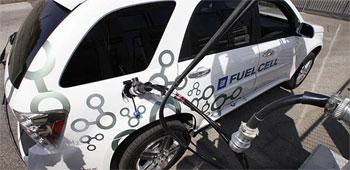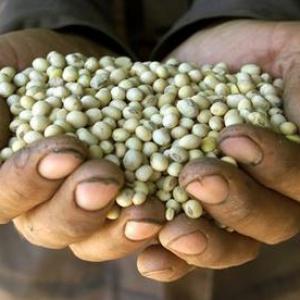Husks and stalks of corn plants are used to create the fuel
 Researchers have discovered a new way to produce hydrogen fuel using abundantly available corn stover - the stalks, cobs, and husks.
Researchers have discovered a new way to produce hydrogen fuel using abundantly available corn stover - the stalks, cobs, and husks.
The findings could help speed the widespread arrival of hydrogen-powered vehicles in a way that is inexpensive and has extremely low carbon emissions, researchers said.
"This means we have demonstrated the most important step toward a hydrogen economy - producing distributed and affordable green hydrogen from local biomass resources," said Percival Zhang, a professor in the Department of Biological Systems Engineering at Virginia Tech.
The work builds upon previous studies Zhang's team has done with xylose, the most abundant simple plant pentose sugar, to produce hydrogen yields that previously were attainable only in theory.
Unlike other hydrogen fuel production methods that rely on highly processed sugars, the new study used dirty biomass - the husks and stalks of corn plants - to create the fuel.
This not only reduces the initial expense of creating the fuel, it enables the use of a fuel source readily available near the processing plants, making the creation of the fuel a local enterprise, researchers said.
Joe Rollin, a former doctoral student of Zhang's at Virginia Tech and co-founder with Zhang of the start-up company Cell-free Bioinnovations, used a genetic algorithm along with a series of complex mathematical expressions to analyse each step of the enzymatic process that breaks down corn stover into hydrogen and carbon dioxide.
He also confirmed the ability of this system to use both sugars glucose and xylose at the same time, which increases the rate at which the hydrogen is released.
Typically in biological conversions, these two sugars can only be used sequentially, not simultaneously, which adds time and money to the process.
One of the biggest hurdles to widespread hydrogen use is the capital cost required to produce the fuel from natural gas in large facilities. Distribution of the hydrogen to users of fuel cell vehicles is another key challenge.
Rollin's model increased reaction rates by threefold, decreasing the required facility size to about the size of a gas station, which reduces associated capital costs.
The dominant current method for producing hydrogen uses natural gas, which is expensive to distribute and causes fossil carbon emissions.
The study is published in the journal Proceedings of the National Academy of Sciences.








